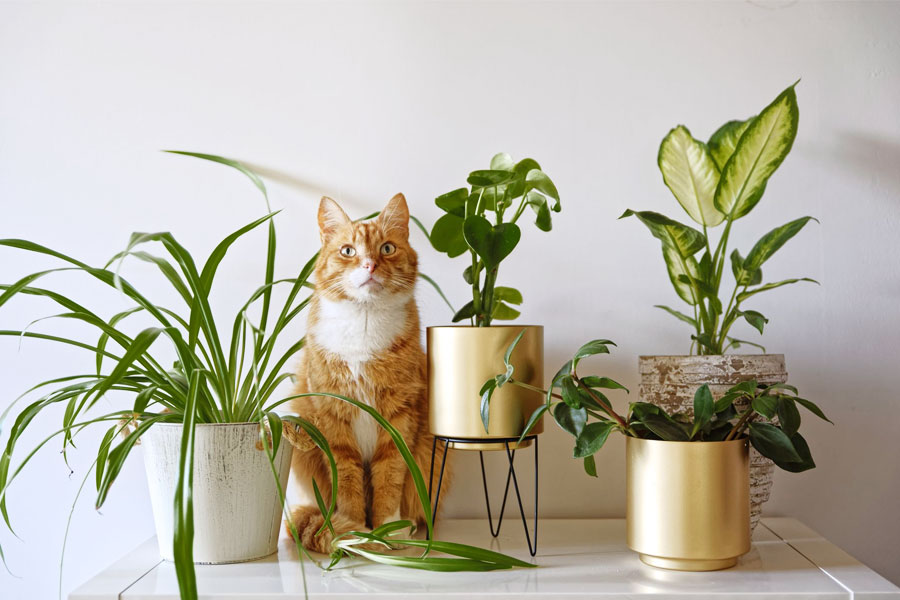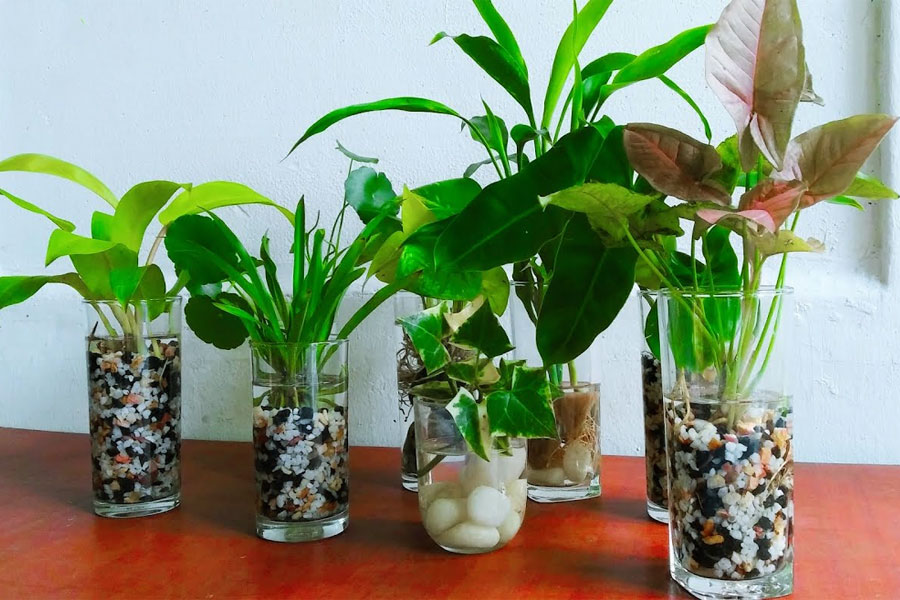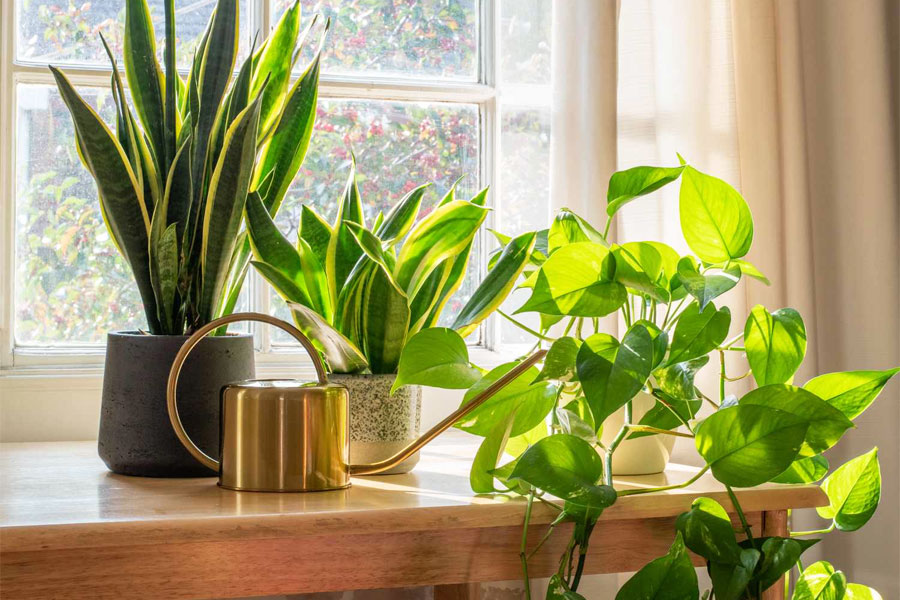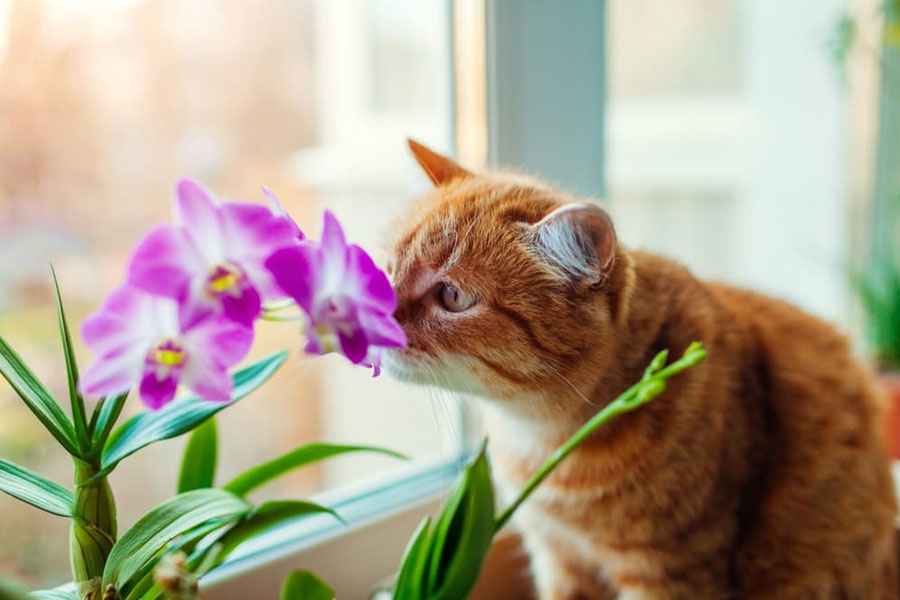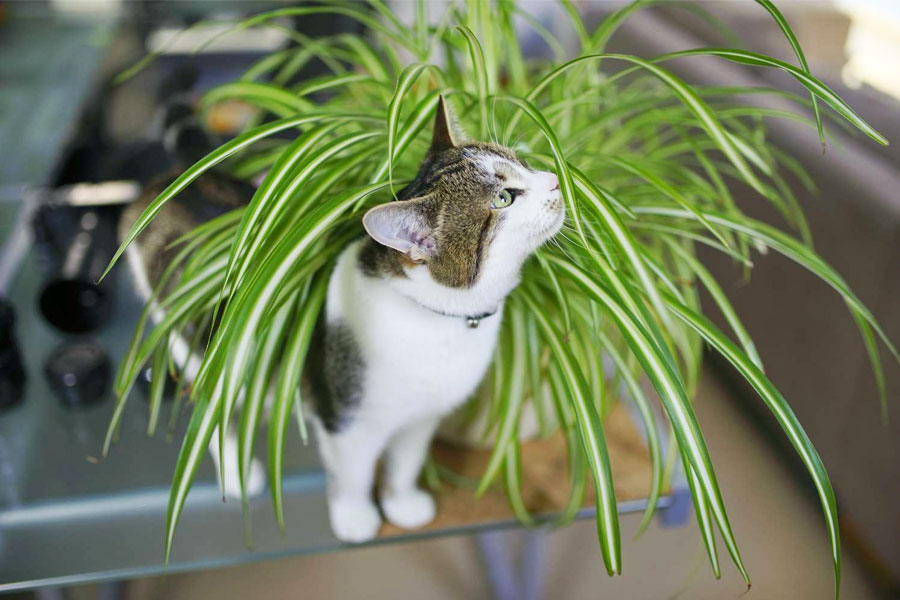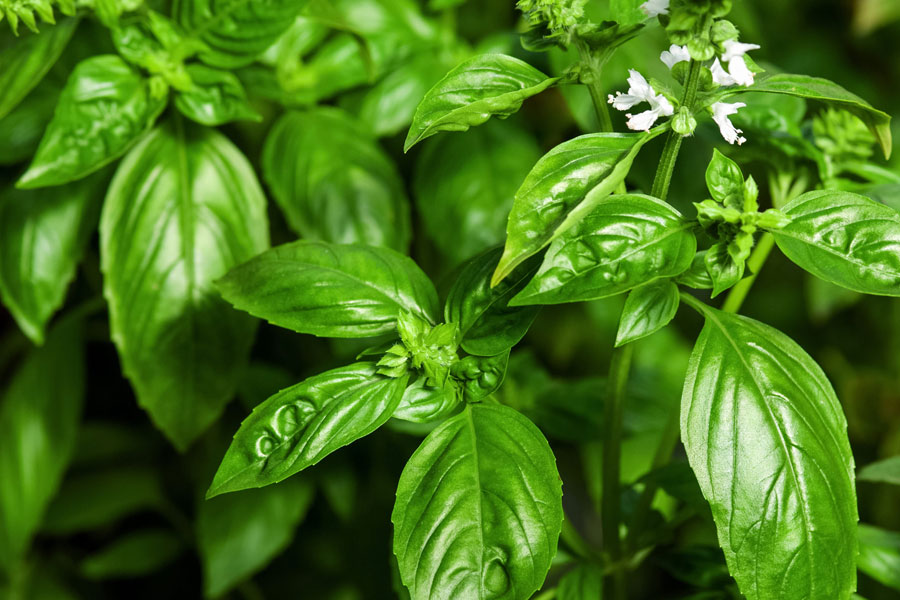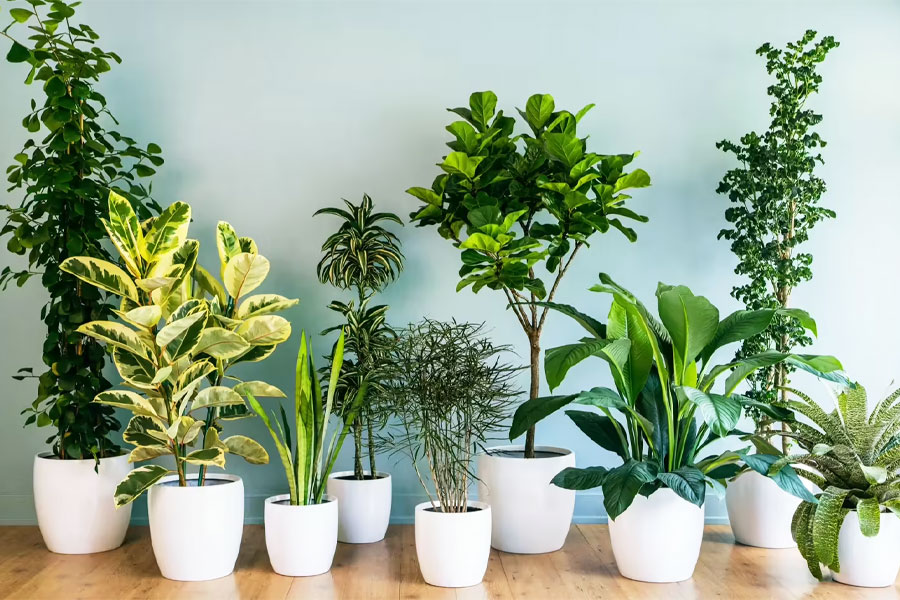
Does growing plants inside cause your green thumb to turn to stone? Keep hope. Adding a few indoor plants is an easy way to add individuality, color, and feng shui to your house. Houseplants are a much more economical way to freshen your home than a new throw blanket or accent chair.
Aside from their exhilarating vitality and color, the most significant indoor plants provide health advantages. Air-purifying plants can help filter hazardous pollutants from the air you and your family breathe, and being among plants can help you feel less anxious and stressed.
This article will discuss the top 20 indoor plants, allowing you to create your urban jungle with minimum effort.
Top 20 Best Indoor Plants
1. Bird’s Nest Fern

Bird’s-nest ferns have been popular among fern aficionados since the Victorian era. These lovely, brilliant green ferns from the Asplenium genus have a crown of erect, undivided fronds that form a rosette, producing a funnel-like center above a mat of fibrous roots at the base.
The final form resembles a bowl or saucer, similar to a bird’s nest. For a less picky fern, choose the bird’s nest fern. This one has thick, glossy leaves that retain moisture and humidity longer than many other species of ferns, making it the least demanding of the bunch. Give it indirect solid light and water only when the top few inches of soil are dry.
2. Majesty Palm

Majesty palm (Ravenea rivularis) is a low-maintenance plant that adds timeless beauty to indoor and outdoor areas. When it comes to decorating, this palm is a bit of a chameleon. It has a tropical appeal, but it also almost magically appears to suit almost any other design, from sleek contemporary to cozy cottage.
Its delicate-appearing fronds appear precisely what the doctor ordered when seeking a textural plant.
3. Zebra Plant

The zebra plant has stunning dark green foliage with prominent white stripes. With its high-contrast foliage and statuesque appearance, this plant requires more care but may pay off beautifully. In ideal conditions, zebra plants may produce vivid yellow spiked flower clusters lasting up to 6 weeks!
They require plenty of bright indirect light and should be watered every few weeks when they’re scorched. Overwatering is easy, so examine the soil beforehand to prevent root rot.
4. Prayer Plant ‘Beauty Kim’

This bright, striped, velvety shrub is native to the Brazilian tropics. It was given the name “prayer plant” because, at night, the leaves fold up like hands in prayer. This adaptation has been described as helping the roots acquire access to rainwater.
Maranta leuconeura ‘Beauty Kim’ has lovely medium green leaves with a row of chocolate dots on either side that produce random variegation from white to creamy yellow!
5. Blue Star Fern

Blue star fern, also known as golden polypody or cabbage palm fern, is distinguished by its elongated, multi-lobed fronds and attractive blue-green color. While most fern species require high humidity, blue star fern can survive with ordinary household moisture levels, making it an excellent houseplant fern.
This popular choice also loves medium indoor lighting and wet, well-drained soil. Blue Star Fern is a low-maintenance house plant ideal for fern beginners.
6. Monstera Swiss Cheese Plant

The Swiss cheese plant (Monstera adansonii) receives its popular name from its big, heart-shaped leaves that develop holes as it ages (a phenomenon known as fenestration). This causes the leaves to resemble Swiss cheese.
The Swiss cheese plant, native to Central and South America, is a tropical perennial commonly grown indoors. The ideal setting is bright, indirect sunshine, with weekly watering. Knowing that all Monstera plants harm pets is crucial, so use caution while growing them inside.
7. Algerian Ivy

Algerian ivy is a climbing, evergreen woody vine with big leaves. It spreads swiftly, making it an appealing groundcover. It prefers well-drained soil with additives but will thrive in most soil types. Because of its high salt tolerance, Algerian ivy is also suitable for coastal environments.
The ‘Variegata’ cultivar has green, lobed leaves bordered by white and is less hardy than the green type. Like any other trailing ivy, this gorgeous houseplant requires regular trimming of its fast-growing tendrils.
8. Boston Fern

Boston fern, commonly known as sword fern, is prominent in many tropical regions worldwide. It is considered a classic indoor houseplant in North America because it does not require much sunshine and may thrive for many years. It also cleanses the air and raises the humidity in a space.
Outdoors, this perennial plant thrives in marshy, humid, and wooded regions, making it an ideal choice for partial-shade gardens in Southern California or Florida.
9. Tricolor Hoya ‘Krimson Queen’

Hoya carnosa Krimson Queen is a genuine queen in look. Its thick, waxy leaves have stunning tricolor variegation. This famous Hoya species is known for its beauty and drought resistance. Aside from variegated foliage, the Hoya Krimson Queen plant has clusters of porcelain-like blooms.
Combining these two gorgeous aspects adds to the beauty of this plant. This waxy plant has trailing vines of white and green leaves.
10. Corkscrew Rush

Corkscrew Rush is a simple decorative rush of Juncus effusus with unique twisted stems. Sparilis plants don’t have leaves, but their corkscrew-shaped, smooth, green, cylindrical stems are rather beautiful. They can grow erect or prostrate.
The late summer-blooming blooms are yellowish-green to brown in many-flowered cymes, with an obovoid capsule serving as fruit. With leafless stems resembling actual corkscrews, this odd house plant prefers wet soil and indirect light. It can even flourish in low-light conditions with the occasional application of a grow lamp to promote photosynthesis.
11. Olive Tree

An olive tree is well-suited to the Mediterranean and makes an excellent houseplant. It prefers a warm, sunny climate with plenty of humidity. Prune it periodically to keep it looking good, and you’ll enjoy it for years.
With their sage-colored leaves and delicate branches, olive trees complement various interior designs, from classic Victorian to modern minimalism. Growing an olive tree indoors adds a classy touch to your decor, like having a little piece of Tuscany in your house.
12. Golden Pothos

The Golden Pothos plant might earn the title of the most popular houseplant. It is commonly found in indoor buildings, workplaces, and greenhouses. It is often called Devil’s Ivy and is a vining foliage plant from the Araceae plant family.
You’ll appreciate how golden pothos’ leaves shimmer when exposed to light. Pothos plants require partial to bright indirect light and need water only when the soil is mostly dry.
13. ZZ Plant

The Zamioculcas zamiifolia, sometimes the ZZ Plant, is a tropical perennial endemic to Eastern Africa. It has grown in popularity worldwide in recent years due to its ability to withstand various conditions. This very reliable houseplant can survive low light and requires little water.
These plants produce smooth, naturally lustrous leaflets that range in color from brilliant lime in childhood to emerald green in maturity.
14. Rubber Plant

Ficus elastica is an indigenous flowering plant of the Moraceae family found in eastern South and Southeast Asia. It is often referred to as the rubber fig, rubber bush, rubber tree, rubber plant, or Indian rubber bush. It has gained naturalization in the US states of Florida, the West Indies, and Sri Lanka.
Despite its widespread popularity, rubber is not employed in the commercial manufacture of natural rubber. The rubber plant demands intense, indirect lighting. Rubber plants have the added benefit of being one of the most powerful natural air filters accessible.
15. String of Pearls Succulent

The String of Pearls, sometimes the Curio Rowleyanus, is a distinctive trailing succulent. It’s the most stunning houseplant.
The plant comes from the southern tip of Africa, and its distinctiveness makes it a favorite among plant parents. String of Pearls is a spreading succulent with green ball leaves that resemble peas!
16. Chinese Money Plant

The pilea peperomioides, or Chinese money plant, is a genuine jewel. It’s fun, visually appealing, and straightforward to maintain. Pilea plants develop rapidly and produce young plants, which you may share with friends! Their unique shape distinguishes them from other plants.
This plant thrives in bright, indirect sunlight. However, watering must be done in a “drench-and-dry” manner (wet deeply, then allow the soil to dry) and misted regularly.
17. Fiddle-Leaf Fig

The fiddle-leaf fig (Ficus lyrata) has a picky reputation. It is not the simplest houseplant to cultivate, but its magnificent huge leaves and tree shape make it well worth the effort and a fantastic choice for beginners. These little trees are well-suited to interior temperatures and filtered light and tough enough to withstand less-than-ideal circumstances.
This fig may be grown in a window with good morning light. Plant in good soil, maintain a constant watering schedule, and it will grow steadily and swiftly to between six and ten feet tall with minimal trouble.
18. Sweetheart Waxplant

The Hoya Sweetheart Variegated, often known as the wax plant, is a non-blooming houseplant with heart-shaped leaves. The variegated form features a splash of yellow on the leaf. The vines are woody, and the leaves are waxy. They are native to tropical Asia and thrive in warm conditions.
This charming, tiny, heart-shaped plant, also known as Hoya kerrii, is available in single-leaf cuttings or as a whole trailing plant. It’s a succulent that requires very little maintenance and thrives in bright, direct sunshine.
19. Anthurium

Anthurium is a plant found in Central and Northern South America and the Caribbean. It may be grown outdoors in tropical climes, although it is more commonly kept as a houseplant or in greenhouses because of its unique care requirements. The growth rate is sluggish to moderate, requiring plenty of light, yet it is prone to sunburn.
This plant, known for its waxy, heart-shaped blooms with a large stamen in the center, has to be watered every one to two weeks and fertilized on occasion, so it’s not exactly low maintenance, but neither is it high maintenance.
20. Sansevieria

Sansevieria (Mother-in-Law Tongue or Snake Plant) is an incredible plant. Sansevieria originated in Africa and spread to Europe in the 18th century. The scientific name for this sansevieria is Dracaena Trifasciata. It has stunning sculptural beauty and requires minimal maintenance.
Sansevieria or snake plants (also known as mother-in-law’s tongue) prefer indirect light. They require gentle watering once the soil has dried. Place them on a plant stand or in an elevated planted area to add interest to an empty corner of your hall.
What are the Benefits of Indoor Plants?
Research shows that working and living in green settings has significant health benefits. Plants help us relax, be happier, and feel less anxious. Here are some of the indoor plants’ most scientifically proven health advantages.
1. Lower Stress Levels
Research shows that plants in your home or office might make you feel calmer and more comfortable. It was concluded that indoor gardening reduced stress levels. The researchers found that working with plants can also help relieve psychological and physiological stress.
2. Enhance Concentration and Focus
Another study found that incorporating indoor plants aids learning and focus more. Suppose you’re working from home. Putting a small plant near your working table will help you concentrate completely.
3. Working Near Greenery might be Therapeutic
Indoor gardening may be pretty beneficial for persons experiencing symptoms of mental illness. Horticultural therapy has been studied for its ability to relieve symptoms of anxiety, dementia, and depression while also promoting well-being in those suffering from these conditions. There are even clinics in Manchester, England, that “prescribe” potted plants to those suffering from mental illnesses.
4. Help you Recover Quickly from Diseases
Some studies have shown that staring at flowers or plants can help patients heal faster from surgery, accidents, and diseases. According to a 2002 study, persons recovering from various types of surgery recovered considerably quicker and experienced less pain if they looked at plants than those who did not.
5. Assist in Increasing your Productivity
Multiple studies have demonstrated that having plants on your desk may boost creativity and efficiency. People who worked in a plant-filled atmosphere were more productive and less anxious. Plants were also discovered to increase human creativity.
6. Improve Work Happiness
A pleasant view of a park outside the workplace may improve anyone’s attitude. But did you know that a potted plant may have a similar effect? It was shown that having plants in the workplace significantly enhanced job satisfaction and loyalty to an organization when compared to those who did not have plants.
7. Significant Influence on Indoor Air Quality
Phytoremediation? What is this? Well, it’s the scientific word for plants that remove toxins from the air. According to a research study held by NASA in 1980, researchers sought methods to enhance the air quality of enclosed spacecraft, and they concluded that using plants might help lower volatile organic compounds in the air. Plants may also help enhance the overall air quality in your house.
Wrapping Up
So there you have it- your low-maintenance indoor rainforest to brighten your living area. With these durable houseplants, you may enjoy the advantages of greenery in your home without the effort of extensive maintenance. No more stressing about the ideal sunshine or feeling awful about forgetting to water them.
Low-maintenance indoor plants bring the beauty of the outdoors into your home without requiring continual attention. Whether you lead a hectic lifestyle or are new to plant parenthood, these green companions will flourish with little effort, improving your interior environment and well-being.

